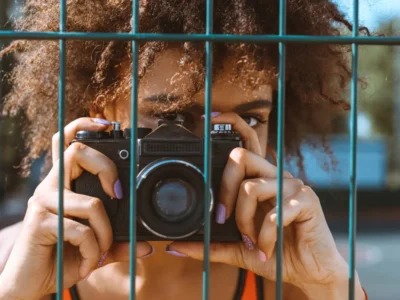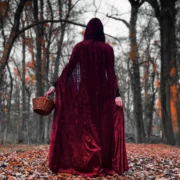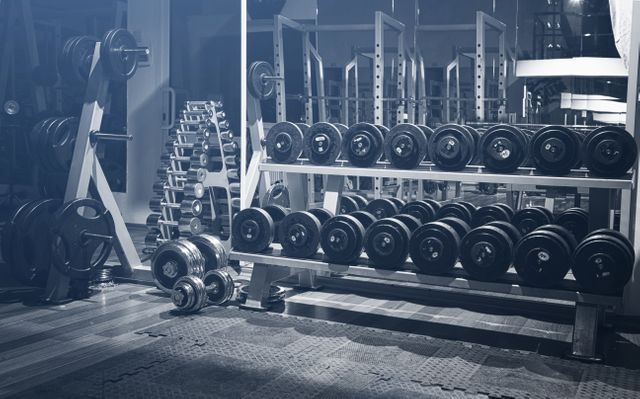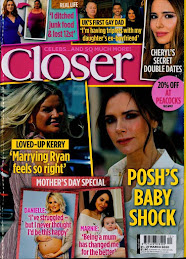
GCSE Media Studies
- Representation
- Production Skills
Explore top GCSE flashcards

Introduction
GCSE Media Studies provides students the opportunity to engage all aspects of the media, including important theories of representation and audience. You will also be required to apply your knowledge of these frameworks through the creation of your own media products.
On this page, you can access the GCSE specification, past papers and mark schemes.
Summary of Assessment
There are two examination papers and a coursework brief to complete.
This written exam lasts for 1 hour 30 minutes. There are a range of questions relating to an unseen source and the Close Study Products. One extended response question is worth 20 marks.
Section A will focus on Media Language and Media Representations. Questions in this section can test any two of the following forms:
- advertising and marketing
- online, social and participatory media and video games.
Section B will focus on Media Industries and Media Audiences. Questions in this section can test any two of the following forms:
- music video
- online, social and participatory media and video games
- film (industries only).
This 1 hour 30 minutes written exam contains short, medium and extended response questions assessing depth of knowledge and understanding of the course.
Section A will be based on a screening from an extract of one of the television Close Study Products and can test any area of the theoretical framework.
Section B will be based on either newspapers or online, social and participatory media and video games and can test any area of the framework.

Media Studies
Non-exam assessment (nea).
You have the choice of one of five annually changing briefs, set by AQA. You are being assessed on your application of knowledge and understanding of the theoretical framework.
You need to produce a statement of intent and a media product for an intended audience.
Past Papers and Mark Schemes
The following pdf files will open in new tabs.
Assessment Objectives
The exams and non-exam assessment will measure how you meet the following assessment objectives.
AO1: Demonstrate knowledge and understanding of:
- the theoretical framework of media
- contexts of media and their influence on media products and processes.
AO2: Analyse media products using the theoretical framework of media, including in relation to their contexts, to make judgments and draw conclusions.
AO3: Create media products for an intended audience, by applying knowledge and understanding of the theoretical framework of media to communicate meaning.
Thanks for reading!
Recently Added

Rule of Thirds

The Classification of Advertisements

Narrative Functions
Key concepts.


Studium and Punctum

Media Language Revision Questions

- The Study of Signs
- Ferdinand de Saussure and Signs
- Roland Barthes
- Charles Peirce’s Sign Categories
- Jean Baudrillard’s Simulacra and Simulation
- Binary Opposition
- Vladimir Propp
- Tzvetan Todorov
- Quest Plots
- Barthes’ 5 Narrative Codes
- Key Concepts in Genre
- David Gauntlett and Identity
- Paul Gilroy
- Liesbet van Zoonen
- The Male Gaze
- The Bechdel Test
- bell hooks and Intersectionality
- The Cultural Industries
- Hypodermic Needle Theory
- Two-Step Flow Theory
- Cultivation Theory
- Stuart Hall’s Reception Theory
- Abraham Maslow
- Uses and Gratifications
- Moral Panic
- Camera Shots
- Indicative Content
- Statement of Intent
- AQA A-Level
- Exam Practice
Representation
- GQ represents itself as a magazine for men who have status and are a cut apart from others.

Successful and aspirational
- Sterling's success is connotated through his necklace, bracelet, and watch.
- These items appear on the upper half of Sterling's body in the absence of other clothing.

- This appeals to traditional expectations of men.
- This representation is a de facto stereotype of what men should be.
- With his muscles on display, Sterling represents the current trend of spornosexual men in media.
- Sterling serves as a highly positive representation for young, black men.

- The use of gold connotes wealth.

Progressive
- Belt bags are often seen as feminine.
- By offering approval, GQ is representing a metrosexual idea of masculinity.
- GQ represents itself as a more progressive force in the representation of men.
1.1 Media Language
1.1.1 Media Language
1.1.2 Media Language 2
1.2 Audience
1.2.1 Audiences
1.2.2 Audiences 2
1.2.3 End of Topic Test - Media Language & Audience
1.3 Representation
1.3.1 Stereotypes
1.3.2 Gender
1.3.3 Audiences
1.4 The Media Industry
1.4.1 Media Industries
1.4.2 Ownership
1.4.3 Funding & Regulation
1.4.4 End of Topic Test - Representation/Media Industry
2 Component 1: Section A
2.1 Magazines
2.1.1 Magazines
2.1.2 Pride
2.1.3 Pride 2
2.2.1 Context
2.2.2 Narrative
2.2.3 Representation
2.3 Advertising & Marketing
2.3.1 Advertising & Marketing
2.3.2 Analysing Adverts
2.3.3 Analysing Adverts 2
2.3.4 Theories & Principles
2.3.5 End of Topic Test - Magazines & Advertising
2.4 Print Advertisements
2.4.1 Quality Street
2.4.2 This Girl Can
2.5 Film Posters (Marketing)
2.5.1 Spectre
2.5.2 The Man with The Golden Gun
2.5.3 The Man with The Golden Gun 2
2.6 Newspapers
2.6.1 Ownership & Regulation
2.6.2 News Selection
2.6.3 Media Language
2.6.4 Genres
2.6.5 Newspaper Conventions
2.6.6 Representation
2.6.7 Audience
2.6.8 Theories
2.6.9 End of Topic Test - Newspapers
2.7 The Sun
2.7.1 Context
2.7.2 Narrative
2.7.3 Language & Images
2.8 The Guardian
2.8.1 The Guardian
2.8.2 Narrative
2.8.3 Language & Images
3 Component 1: Section B
3.1 Video Games
3.1.1 Video Games
3.2.1 The Big Six
3.2.2 Technology
3.2.3 End of Topic Test - Video Games & Films
3.3.1 The Radio Industry
3.3.2 Categories of Radio Station
3.3.3 Technology & Radio Audiences
3.3.4 Theories
3.3.5 End of Topic Test - Radio
3.4 No Time To Die
3.4.1 Context
3.4.2 Narrative
3.4.3 Representation
4 Component 2: Section A
4.1 Television
4.1.1 The Television Industry
4.1.2 Types of Broadcasting
4.1.3 Media Language & TV
4.1.4 Representation & Audiences
4.1.5 Theories
4.2.1 Sitcoms
4.2.2 'The Final Countdown'
4.2.3 Representation
4.2.4 The IT Crowd
4.2.5 Friends
4.2.6 Friends 2
4.2.7 End of Topic Test - Sitcoms & TV
4.3.1 Context
4.3.2 Media Language
4.3.3 Representation
4.3.4 Audience
4.3.5 Industry
4.4 The Sweeney
4.4.1 Context
4.4.2 Media Language
4.4.3 Representation
4.4.4 Audience
4.4.5 Industry
5 Component 2: Section B
5.1 Music Video
5.1.1 Music Videos
5.1.2 The Music Industry
5.2 Michael Jackson
5.2.1 ‘Black or White’
5.3 Taylor Swift
5.3.1 Bad Blood
5.3.2 Intertextual References
5.3.3 Media Theories
5.3.4 Representation
5.3.5 Social Media
5.4 Bruno Mars
5.4.1 Uptown Funk
5.4.2 Analysis
5.4.3 End of Topic Test - Music Videos
5.5.1 Context
5.5.2 'Good as Hell'
5.5.3 Media Language
5.5.4 Representation
5.5.5 Audience
5.5.6 Industry
Jump to other topics

Unlock your full potential with GoStudent tutoring
Affordable 1:1 tutoring from the comfort of your home
Tutors are matched to your specific learning needs
30+ school subjects covered
Advertising & Marketing
Representation of gender Test questions
The representation of gender is a powerful code in media texts.
Part of Media Studies Representation
More guides on this topic
- What is Representation?
- Representation of age
- Ethnic, national and regional identity
- Issues and Events
Related links
- BBC iPlayer
- Gender and Education
Representation
A comprehensive guide to introducing the media concept of representation. It includes an introduction to key terminology, key theorists and their theories and useful activities which offer learners opportunities to contextualise their knowledge and understanding.
'Fair dealing' of third party materials is used for criticism and review purposes however if there are omissions or inaccuracies please inform us so that any necessary corrections can be made [email protected] .
While all resources were correct at the time of publishing, teachers should be aware that things move quickly in the media industry and should therefore check that the information is still current and correct.
Not seeing what you want? Is there are problem with the files? Do you have a suggestion? Please give us feedback, we welcome all correspondence from our users.
GCSE Year 1 Media
Monday 11 january 2021, magazines: representation and social contexts.
- The way the media portrays the world.
- The media takes a story/set of facts and (re)presents them in a certain way.
- In Media Studies we are particularly interested how the media portrays events, issues, individuals and social groups.
- Some groups are misrepresented (represented inaccurately) or under-represented by the Media.
- Media messages have to be communicated quickly which often means relying on stereotypes .
- A stereotype is a standardised, oversimplified picture of a person, group, place or event.
- Stereotypes act like codes that give audiences a quick, common understanding of a person or group of people—usually relating to their gender, class, ethnicity or race, sexual orientation, social role or occupation.
- In print media (news and magazines), a picture editor selects the photo from a whole series of images to be used to illustrate a news story. The image may be cropped, resized and, in some cases, photoshopped so it does not reflect reality.
- A news editor will decide on the way the news story will be presented, and the use of captions to affect the meaning of the image.
- Conventional: typical, the usual, expected representation.
- Subversive: untypical or unexpected representation, differing from the norm. If a representation in the media is NOT what we expect, we say this subverts the usual stereotype in the media.
- Stereotype: A ‘set’ idea that people have about what someone or something is like (not necessarily accurate).
- Mediation: process by which texts are presented and received.
- Representation: how groups or events or individuals are presented / portrayed.

No comments:
Post a comment, television: introduction to tv drama.
Our next topic is Television - a crucial in-depth topic. These are particularly important CSPs as we know they will definitely come up in ...


IMAGES
VIDEO
COMMENTS
In media studies, representation is the way aspects of society, such as gender, age or ethnicity, are presented to audiences. Part of Media Studies Representation Save to My Bitesize Remove from ...
GCSE; Representation of age Young people. Representations of age can influence how audiences respond to a character or real-life person in a media text. Part of Media Studies Representation
This teaching guide will cover all four areas of the theoretical framework (language, representation, industries and audience) for GCSE Media Studies (8572). Students are required to closely analyse and compare media products in relation to relevant key social, cultural, historical and political contexts. This resource is for first teaching in ...
We have free science flashcards for all the AP GCSE Media Studies classes including Industries, Genre, Narrative, Representation, Audiences, Production Skills. To find those, you can use the exams tab in the navigation bar to find free study guides and flashcards for each exam.
Often representations we are provided with reflect the ideological perspectives of the media producers who constructed them and may reflect dominant viewpoints on an issue or group of people, even if it is inaccurate. For example tabloid newspapers representing all muslims as 'dangerous'.
A comprehensive guide to how to understand and analyse the representations in the set This Girl Can advert for GCSE Media Studies on the Eduqas exam board.
A comprehensive guide to how to understand and analyse the representations in the set Quality Street advert for GCSE Media Studies on the Eduqas exam board.
Component 01: Television and Promoting Media. Section A. Television: Learners will engage with one in-depth study covering contemporary and historic television products, responding to questions covering the whole of the theoretical framework and a range of media contexts. Section B. Promoting Media: Learners will study advertising and marketing ...
GCSE Media Studies provides students the opportunity to engage all aspects of the media, including important theories of representation and audience. You will also be required to apply your knowledge of these frameworks through the creation of your own media products. On this page, you can access the GCSE specification, past papers and mark ...
GCSE MEDIA STUDIES (8572) Paper 2 Media Two Understand how the highest levels were achieved and how to interpret the mark scheme. ... Media Language and Media Representations linked to the respective historical and cultural contexts of the two CSPs. (AO2 1a) Overall, this is a fluent and cogent ...
A simple and easy to understand guide to Stuart Hall's Representation Theory to help students and teachers doing Media Studies at A-level, or even at GCSE. ...
This representation is a de facto stereotype of what men should be. With his muscles on display, Sterling represents the current trend of spornosexual men in media. Sterling serves as a highly positive representation for young, black men.
GCSE Media Studies - Representation. Flashcards. Learn. Test. Match. Flashcards. Learn. Test. Match. Created by. katestaley. Theory and Key concepts. Terms in this set (45) Representation. A re-presentation of a group of people, things or ideas. Anchorage. Words that add extra meaning to a image. Crop.
The representation of gender is a powerful code in media texts. ... GCSE; Representation of gender Test questions. ... Part of Media Studies Representation. Save to My Bitesize Remove from My ...
Media - Representation 1 Newspapers - teacher notes Media - Representation Representations - advertising, video games and newspapers This set of resources has been created to support the teaching of Unit 1, Section A of the GCSE Media Studies qualification. In the external assessment unit students will be expected to display
MARK SCHEME - GCSE MEDIA STUDIES - 8572/1 - JUNE 2022 . 7 • VVD's body position - head tilted upwards and to the side - reinforce his direction of gaze - downwards and towards the viewer suggesting - masculine qualities of power, pride, dominance, attitude, confidence and success. It is a pose connoting the male hero figure
KS4 >. A comprehensive guide to introducing the media concept of representation. It includes an introduction to key terminology, key theorists and their theories and useful activities which offer learners opportunities to contextualise their knowledge and understanding. 'Fair dealing' of third party materials is used for criticism and review ...
We'll make it. 24/7 customer support (with real people!) Media Studies - Representation, Media Studies, , GCSE English - Full Collection, Welcome to Beyond's gargantuan group of GCSE English resources, including full lesson plans, individual GCSE English worksheets, units of work and more.
Answer the following questions on your blog: 1) Write a definition of representation in media studies. Clue: The answer is in the notes above! 2) Now look at the cover of Closer magazine above. List all different types of people and groups represented on the front cover. E.g. women, celebrities, race/ethnicity etc.
PART 2: STARTING POINTS - Representation How representations reflect the social, historical and cultural contexts in which they were produced. Consider how media language is used to construct representations: The Sweeney clearly reflects the values and beliefs of 1970s society in terms of the representations constructed. The police are white
GCSE Media Studies Set Product Factsheet 4 "who are shaping society and culture around us". Representations of ethnicity and gender: • Using a hugely successful black cover star (Raheem Sterling is British Jamaican) as their dominant image, GQ is presenting a role model for its readers, someone to aspire to be like.
Focus on meanings created by different elements of design and layout is thorough and effective throughout. Consistently appropriate and effective use of subject specific terminology throughout. 3. 7-9. Good analysis of the product that is clear and generally engages with the nuanced aspects of how design and layout are used. Focus on meanings ...
Aimed at Eduqas Media Studies students